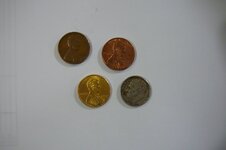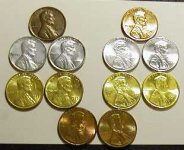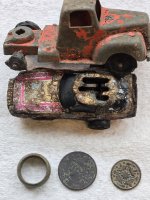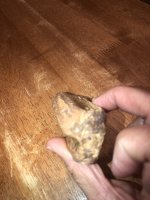Went to the grocery store today, walked by the Coinstar on the way in and grabbed a few coins out of the reject slot. Didn't look at them and proceeded to go get some food (it was Taco night at home). Checked out through the self check out and got a gold plated penny in my change (Also found a dime on the floor by the checkout) . Never seen one of those before in the wild. When I got out to the truck I checked the coinstar change and found four Zincolns and a '60'D Rosie. It's small potato's for most of you but I'm pretty stoked about both the Rosie and the gold plated penny. Picture has the silver dime, the gold penny and two other pennies for color comparison.
Thanks for looking.
Twitch
Thanks for looking.
Twitch
Attachments
Upvote
0








